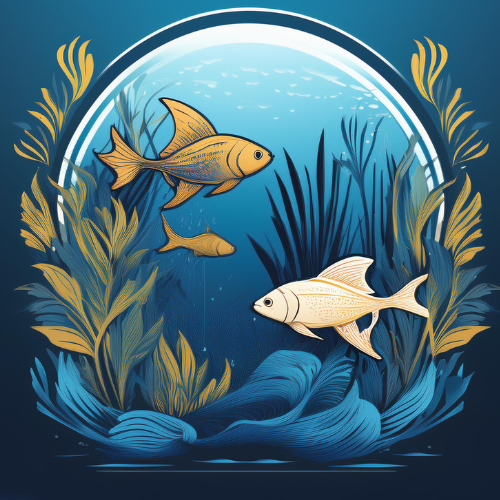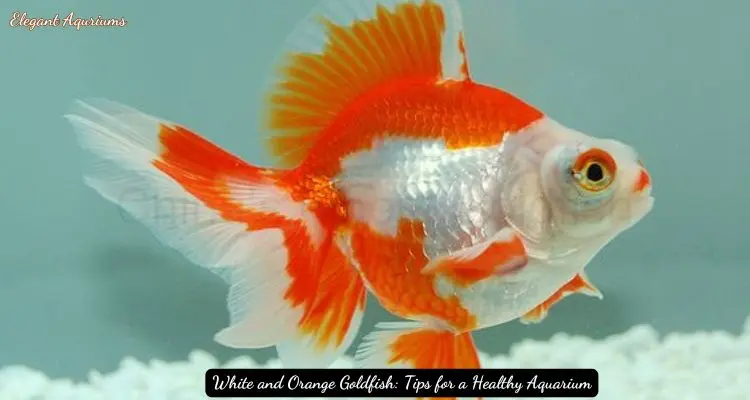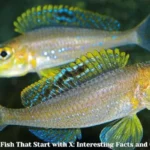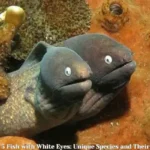Fish and fish varieties
White and Orange Goldfish: Tips for a Healthy Aquarium
Goldfish, especially the white and orange variety, are among the most popular fish for home aquariums. Their striking colors and graceful movements make them a favorite for both novice and experienced aquarists. However, maintaining a healthy aquarium for white and orange goldfish requires proper care and attention to several key factors. This aarticle “Elegant Aquriums” will guide you through the essentials of keeping these beautiful fish happy and healthy.
Understanding White and Orange Goldfish
White and orange goldfish are a color morph of the common goldfish, scientifically known as Carassius auratus. They are part of the Cyprinidae family and are native to East Asia. The color variations in goldfish are a result of selective breeding over centuries. White and orange goldfish are particularly popular due to their vivid contrast and aesthetic appeal in aquariums.
Goldfish can live up to 15 years or more with proper care, making them a long-term commitment. They are social animals and can thrive in community tanks with other peaceful fish. However, their specific needs must be met to ensure their health and longevity.
Setting Up the Aquarium

Tank Size
One of the most common mistakes new goldfish owners make is underestimating the tank size needed. Despite their relatively small size when purchased, goldfish can grow significantly. A single goldfish requires at least 20 gallons of water, and each additional goldfish needs an extra 10 gallons. Therefore, a pair of white and orange goldfish should ideally be housed in a 30-gallon tank.
Filtration
Goldfish are known for producing a significant amount of waste, which can quickly lead to poor water quality if not properly managed. A high-quality filtration system is essential to keep the water clean and free of harmful toxins. A combination of mechanical, biological, and chemical filtration is recommended. Regular maintenance of the filter, including cleaning and replacing media as needed, will ensure its effectiveness.
Substrate and Decorations
The choice of substrate and decorations not only affects the aesthetics of the aquarium but also the health of the fish. Smooth gravel or sand is preferred to prevent injury to the goldfish, which are known to forage at the bottom of the tank. Avoid sharp or jagged decorations that could harm the fish. Providing hiding spots and plants (either live or artificial) can help reduce stress and create a more natural environment.
Water Parameters
Maintaining stable water parameters is crucial for the health of white and orange goldfish. Goldfish prefer a temperature range of 65-75°F (18-24°C). They can tolerate a wide range of pH levels, but the ideal range is between 7.0 and 8.4. Regularly testing the water for ammonia, nitrites, nitrates, and pH levels is essential. Performing partial water changes (about 25% of the tank volume) every week will help keep the water quality high.
Diet and Feeding
White and orange goldfish are omnivores and require a balanced diet to stay healthy. A varied diet will provide the necessary nutrients and prevent nutritional deficiencies.
Staple Diet
Commercially available goldfish pellets or flakes should form the staple of their diet. These are specially formulated to meet the nutritional needs of goldfish. Look for high-quality products that list fish meal or other protein sources as the primary ingredient.
Supplementary Foods
In addition to commercial food, supplementing their diet with fresh or frozen foods will enhance their health and coloration. Suitable options include:
- Vegetables: Blanched spinach, lettuce, peas, and zucchini.
- Proteins: Brine shrimp, bloodworms, and daphnia.
- Fruits: Small amounts of orange or watermelon (without seeds).
Avoid overfeeding, as uneaten food can quickly pollute the water. Feed your goldfish small amounts 2-3 times a day, only as much as they can consume in a few minutes.
Health and Disease Prevention
Goldfish are generally hardy, but they are susceptible to various diseases if their environment is not properly maintained. Knowing the common signs of illness and taking preventive measures can help ensure the health of your white and orange goldfish.
Common Diseases
- Ich (White Spot Disease): Characterized by white spots on the body and fins. It is caused by a parasite and can be treated with over-the-counter medications.
- Fin Rot: Caused by bacterial infections, often due to poor water quality. Symptoms include frayed or discolored fins. Treatment involves improving water conditions and using antibiotics.
- Swim Bladder Disease: Affects the fish’s buoyancy, causing it to float awkwardly. It can result from poor diet, constipation, or infections. Feeding shelled peas can help alleviate the symptoms.
- Anchor Worms: These are visible parasites that attach to the fish. They can be removed manually and treated with anti-parasitic medications.
Preventive Measures
- Quarantine New Fish: Always quarantine new fish for at least two weeks before introducing them to the main tank. This helps prevent the spread of diseases.
- Maintain Clean Water: Regular water changes and filter maintenance are crucial for preventing disease.
- Avoid Overcrowding: Overcrowded tanks can lead to stress and increased susceptibility to illness.
- Provide a Balanced Diet: A varied and nutritious diet will boost the immune system of your goldfish.
Breeding White and Orange Goldfish
Breeding goldfish can be a rewarding experience, but it requires careful planning and preparation.
Sexing Goldfish
Determining the sex of goldfish can be challenging, especially when they are young. However, during the breeding season, males develop white breeding tubercles on their gill covers and pectoral fins. Females tend to have a rounder, fuller body when viewed from above.
Breeding Conditions
Goldfish typically spawn in the spring when water temperatures rise. To encourage breeding, gradually increase the tank temperature to around 74-78°F (23-26°C). Providing a breeding mop or live plants will give the female a place to lay her eggs.
Raising Fry
Once the eggs are laid, it is important to separate them from the adults, as goldfish may eat their own eggs. The eggs will hatch in 4-7 days, depending on the temperature. Newly hatched fry can be fed infusoria or commercially available fry food until they are large enough to eat crushed flakes or pellets.
Tankmates for White and Orange Goldfish
While goldfish are generally peaceful, not all fish are suitable tankmates. Goldfish are cold-water fish and require a different environment than tropical fish. Suitable tankmates include:
- Other Goldfish: Similar-sized goldfish of different varieties can coexist peacefully.
- White Cloud Mountain Minnows: These small, peaceful fish can tolerate similar water conditions.
- Bristlenose Plecos: They are good algae eaters and can live in a goldfish tank without issues.
Avoid aggressive or fin-nipping species, as well as fish that require warmer water temperatures.
Conclusion
Maintaining a healthy aquarium for white and orange goldfish involves attention to detail and a commitment to providing the best possible environment. By ensuring the right tank size, proper filtration, stable water parameters, and a balanced diet, you can enjoy the beauty and grace of these fish for many years. Regular monitoring and preventive care will help keep your goldfish healthy and thriving, allowing you to fully appreciate the joy they bring to your home.
With proper care, white and orange goldfish can be a stunning and rewarding addition to any aquarium. By following the tips outlined in this article, you can create a thriving aquatic environment that showcases the vibrant beauty of these popular fish.











